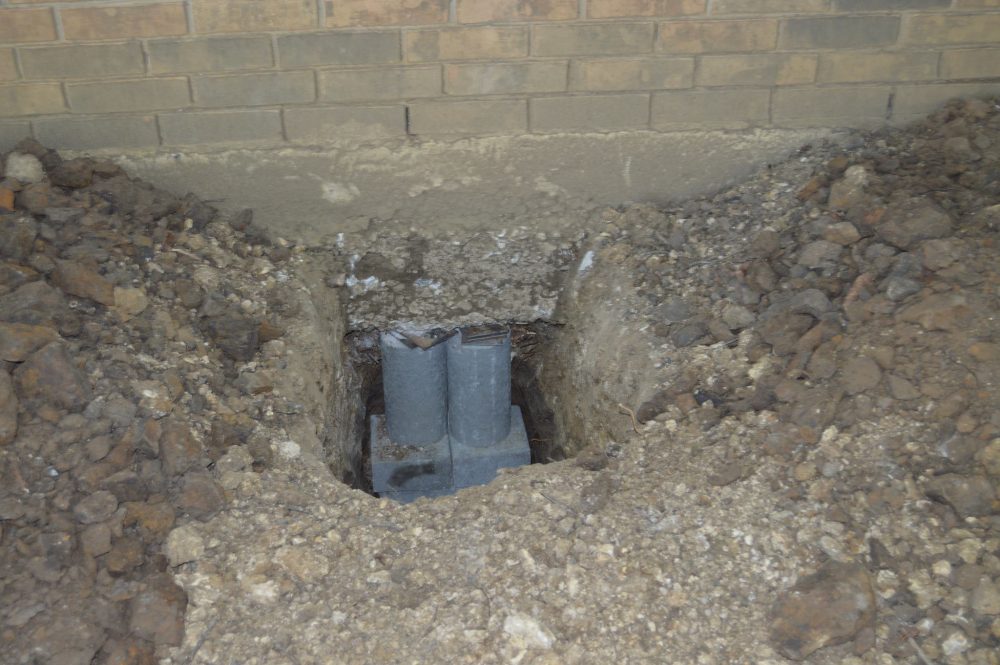Sagging Floors? How to Diagnose Common Pier and Beam Foundation Problems
Pier and Beam Foundation Repair: Identifying the Causes of Sloping and Sagging Floors
Walking across your home and feeling the floors dip, bounce, or slope can be an unsettling experience. These symptoms often signal issues with your pier and beam foundation—problems that, if left unaddressed, can lead to more serious structural concerns and costly repairs. At Steady House Foundation Repair, we’ve spent over two decades diagnosing and resolving pier and beam foundation issues for homeowners throughout the region. Our specialized team combines extensive technical knowledge with practical experience, using advanced assessment techniques to identify the root causes of foundation problems rather than simply addressing surface symptoms.
What sets our approach apart is our commitment to comprehensive diagnosis and tailored solutions. Unlike companies that offer one-size-fits-all fixes, we understand that each pier and beam foundation has unique characteristics and challenges. Our thorough approach allows us to develop repair plans that effectively address current issues while preventing future problems.

Common Causes: Why Pier and Beam Foundations Develop Problems
Several factors can lead to the sagging floors and uneven surfaces commonly associated with pier and beam foundation issues.
Wood rot represents one of the most common and destructive problems affecting pier and beam foundations. When floor joists, support beams, or sill plates are exposed to excessive moisture for extended periods, fungi can attack the wood, compromising its structural integrity. This biological deterioration often begins subtly but can progress rapidly in humid climates.
Soil expansion and contraction cycles due to moisture variations can displace support piers or cause them to settle unevenly. Local clay soils are often notorious for their high expansion potential, sometimes changing volume by 15% or more between dry and wet conditions. This movement exerts tremendous pressure on foundation elements, gradually shifting them from their original positions.
Inadequate pier spacing represents a common design flaw in older homes or properties where additions were improperly constructed. When support piers are placed too far apart, floor joists may begin to sag under the weight they carry. Many older homes simply don’t have the pier density that modern construction standards would require.
Deteriorated support piers can fail gradually as they age and degrade. Traditional brick-and-mortar piers, concrete block piers, and wooden posts all have vulnerabilities to moisture, settling, and insect damage. Even homes with more modern adjustable steel piers may experience problems if the piers weren’t properly installed.
DIY Diagnosis: Identifying Potential Pier and Beam Issues
Before calling a professional, there are several assessment techniques homeowners can use to evaluate potential foundation problems.
Floor level assessment using a long level or straight board with a bubble level placed on the floor can identify sloping or dipping areas. Pay particular attention to areas near walls and in the centers of rooms, where deflection is often most noticeable.
Crawl space examination provides direct access to foundation components for visual inspection. Look for signs of moisture, including standing water, water stains on wood, or damp soil. Inspect wooden beams and joists for discoloration, visible fungi growth, or areas that appear damaged or deteriorated. Examine support piers for cracks, leaning, or signs of sinking.
Secondary symptom identification throughout the house often correlates with foundation issues. Doors that stick or won’t latch properly, cracks appearing above doorways or windows, and separated baseboards or trim all frequently indicate foundation movement.
When to Act: Prioritizing Foundation Repairs
Understanding which foundation issues require immediate attention versus those that can be monitored over time helps homeowners make informed decisions.
Significant structural displacement, including severely sagging floors (more than 1-2 inches across a room), dramatically sloping surfaces, or visibly failing support elements, requires prompt professional intervention.
Active water intrusion in the crawl space should be addressed quickly before it leads to serious structural deterioration. Standing water, consistently damp soil, or evidence of regular water flow through the crawl space creates conditions that rapidly accelerate wood rot and other forms of deterioration.
Visible structural damage to primary support elements, including cracked or split main support beams, severely compromised floor joists, or failing support piers, represents a serious concern requiring immediate expert assessment.
Restore Your Home’s Foundation with Steady House Foundation Repair
If you’ve noticed uneven floors, sticking doors, or other signs of potential foundation issues, professional assessment is the crucial first step toward protecting your home. At Steady House Foundation Repair, we provide thorough, honest evaluations of pier and beam foundations, identifying both immediate concerns and potential future issues.
Contact us today to schedule your comprehensive foundation assessment. Our experienced team will thoroughly inspect your home’s foundation, explain our findings in clear terms, and provide customized recommendations based on your specific situation.
Don’t let foundation problems threaten your home’s structural integrity and value. Trust Steady House Foundation Repair for expert diagnosis and lasting solutions that restore your peace of mind.
